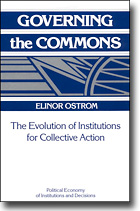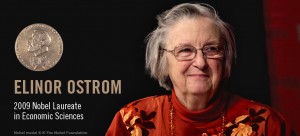Pia Mancini: How to upgrade democracy for the Internet era – YouTube.
In case anyone watches the featured video and wonders, “yes… but what are the actual mechanisms that allow individuals to organize and make sound decisions regarding diverse ecosystems, while also managing critical resources for human survival?” That is a great question! There are indeed some very compelling examples and literature available. I recommend starting with the work of Nobel Prize winning political economist Elinor Ostrom, particularly her book entitled Governing the Commons. Paul Hawken’s The Ecology of Commerce, is another such thought resource.
All efforts to organize collective action, whether by an external ruler, an entrepreneur, or a set of principals who wish to gain collective benefits, must address a common set of problems.Elinor Ostrom
In comparing communities, Ostrom found that there are some basic design principles that characterize successful self-governance:
1. Group boundaries are clearly defined.
2. Rules governing the use of collective goods are well matched to local needs and conditions.
3. Most individuals affected by these rules can participate in modifying the rules.
4. The rights of community members to devise their own rules is respected by external authorities.
5. A system for monitoring member’s behavior exists; the community members themselves undertake this monitoring.
6. A graduated system of sanctions is used.
7. Community members have access to low-cost conflict resolution mechanisms.
8. For CPRs that are parts of larger systems: appropriation, provision, monitoring, enforcement, conflict resolution, and governance activities are organized in multiple layers of nested enterprises.
Take a peak at Ostrom’s enormous body of work: OMG So Much Stuff!
-Featured Art by Nina Paley


